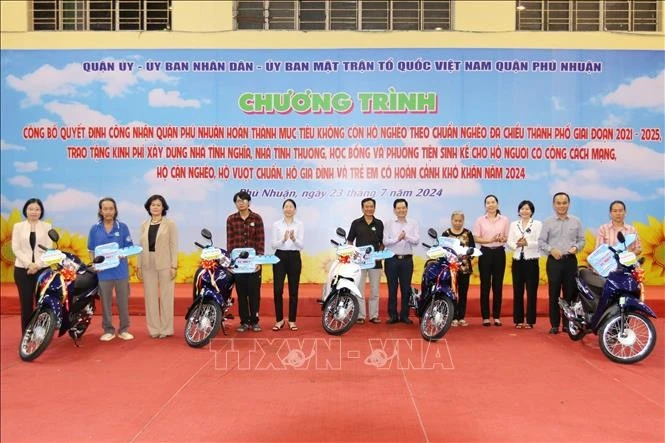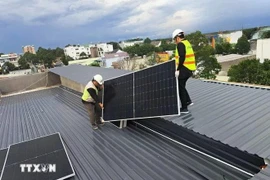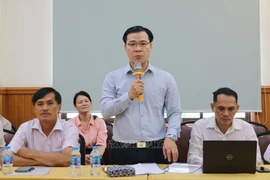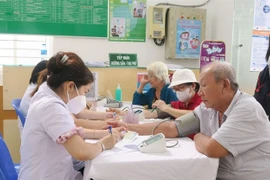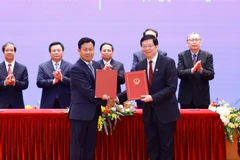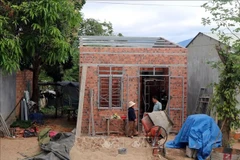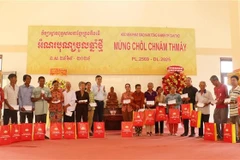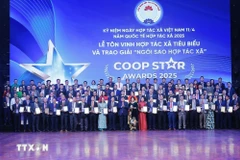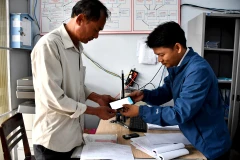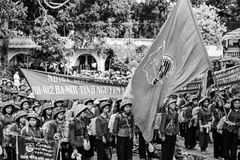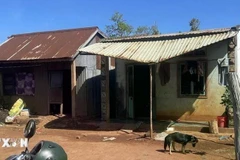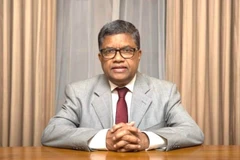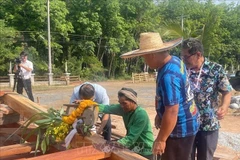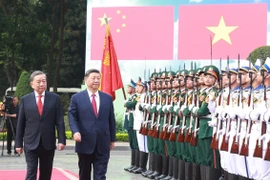HCM City (VNA) – Since 2009, Ho Chi Minh City has taken a significant step in its poverty reduction efforts by adopting a multidimensional approach, ensuring that disadvantaged households not only increase their income but also gain access to minimum living standards and essential social services
This shift has helped improve not just financial stability but also the overall quality of life for many residents.
In 2016, the Vietnam Fatherland Front (VFF) Committee in Binh Chanh district launched the “Livelihoods for a Sustainable Future” programme, which has supported hundreds of households with the tools they need to generate income and gradually escape poverty.
One such case is Pham Thi Lan, who previously had no land and no stable job. With funding from local businesses, the district VFF Committee provided her with a sewing machine in 2018.
“Once I had the sewing machine, I began taking garment orders from local shops and offering clothing repair services to neighbours. That brought my family a stable source of income,” she said.
Her husband also found employment at a small company, allowing the family to begin saving. By early this year, Lan was thrilled to see their once-dilapidated home replaced with a solid house, and her children now attend school regularly.
Many other households in the district have also benefited from similar support. The livelihood assistance programme follows a clear process — from planning and needs assessment to beneficiary selection and monitoring of implementation. As a result, nearly 84% of participating households have made effective use of the support provided.
At the start of the 2021–2025 period, the city had over 58,000 poor and near-poor households, accounting for 2.3% of all households. To address this, the city has introduced a variety of support policies and programmes — including production and business development, livelihood diversification, micro-loans, vocational training, nutritional support, educational aid, and housing assistance.
Changing mindsets
A key highlight of the programme is the shift in mindset among poor and near-poor households.
Huynh Van Beo’s family in Binh Thanh district is an example. Once classified as poor, the family of six managed to improve their circumstances through access to preferential loans and the donation of a motorbike, which enabled them to earn a living.
“Our income is stable now, and we’ve renovated our home. I wanted to give this opportunity to others who need it more,” Beo said.
His family was among 122 households in the district that voluntarily withdrew from the poverty reduction programme in late 2024.
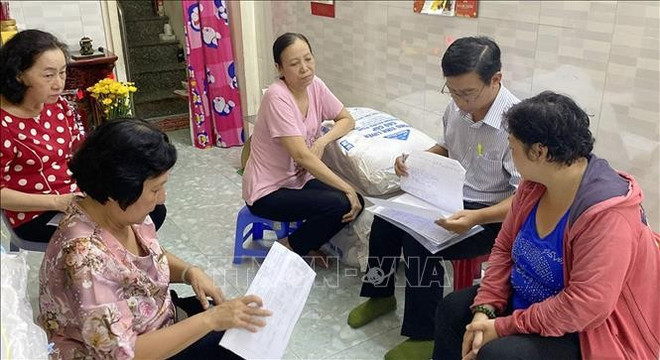
Binh Thanh district was officially recognised as having no poor households under the city’s multidimensional poverty standard one year ahead of schedule. This achievement was attributed to various welfare initiatives, including health insurance coverage, job placement and vocational counseling, tuition waivers, home repair support, and preferential loans.
Currently, many districts across the city have met their targets for eliminating poverty based on the city’s 2021–2025 multidimensional poverty standard.
According to Nguyen Thi Hong Ha, Chief of the Office of the city’s Steering Committee for Sustainable Poverty Reduction, HCM City reduced the number of poor and near-poor households by 69,914, or 2.7% of the total households during the reviewed period. So far, 13 districts have met the poverty-free target, with the remaining nine expected to achieve it in the first quarter of this year.
A standout success of the programme has been the growing awareness and self-reliance among poor and near-poor households. Many have strived to stabilise their lives, and pursue education, vocational training, and employment, making the most of the support opportunities available to them and reducing their dependence on government or external aid.
Tran Thi Dieu Thuy, Vice Chairwoman of the municipal People’s Committee, emphasised that in the coming years, the city will continue implementing sustainable poverty reduction strategies, preventing people from falling back into poverty, and promoting inclusive economic growth and social security.
By 2030, the city aims to raise its poverty income threshold to twice the national standard, eliminate poverty under the national definition, and reduce the number of poor households under the city’s own standards to below 0.5%.
“The city will continue exploring practical solutions to support production and business, create opportunities, and empower the poor to live independently and confidently, thus transforming their lives from poverty to prosperity, and contributing to building a livable, modern, civilised, and compassionate city,” Thuy said./.
